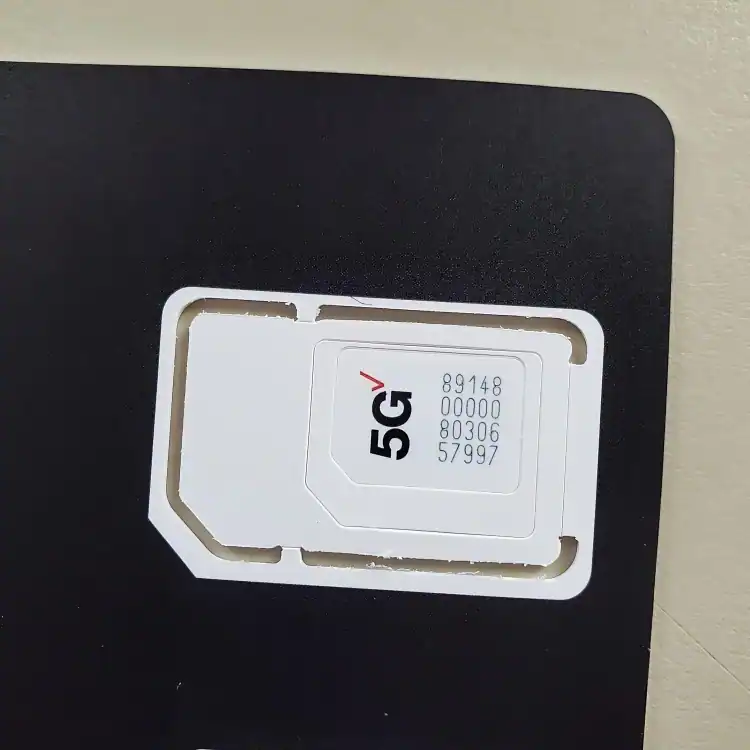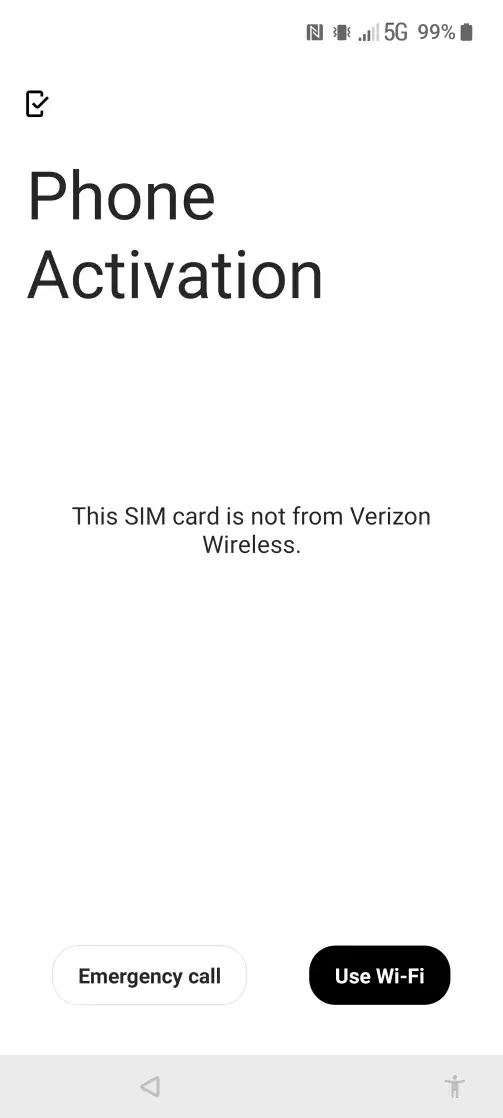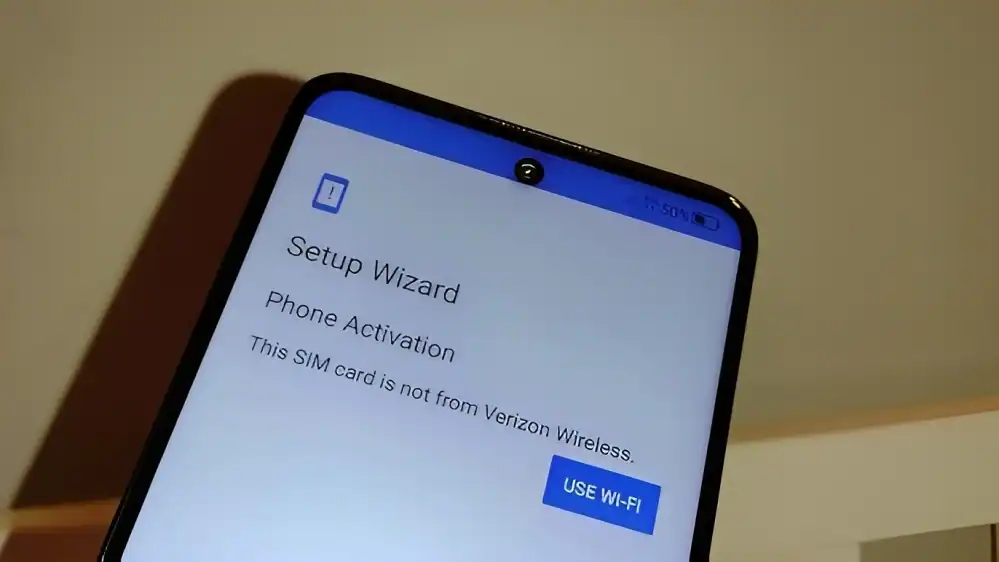This is exactly What to do when the SIM card is not from Verizon Wireless permanently, with easy steps.
It has been proven by the users that if you follow these actionable steps it can help you to get rid of it.
How I Fixed SIM Card is Not from Verizon Wireless
To address the “SIM card is not from Verizon Wireless” error message, follow these troubleshooting steps:
If you get a message that a SIM card is not from Verizon Wireless, first try reinserting the SIM card properly and make sure it’s activated on your Verizon account. If that does not work, contact Verizon to troubleshoot – you may need to verify you have the correct SIM card type for your device and rate plan or obtain a replacement. Resetting network settings can also clear up connectivity issues related to the SIM. Getting the right SIM set up by Verizon is key to resolving the “SIM not from Verizon Wireless” error.

So, you’ve found yourself facing the dreaded “SIM card is not from Verizon Wireless” error, and your patience is wearing thin. I get it – been there, done that. Let’s walk through some steps based on my own experience to tackle this annoyance.
Fix 1: Verify Phone Compatibility
In my case, the first thing I did was to double-check whether my phone was truly unlocked and compatible with the SIM card from my new carrier. This information was conveniently tucked away in my phone’s documentation. If you’re unsure, a quick call to the phone manufacturer can clear things up.

Fix 2: Check your SIM card With this
When I wanted to check the status of my SIM card, I found a simple and quick method. All you need to do is dial *#06# on your device, and it will display the SIM card’s unique IMEI number. In my case, when I did this, the IMEI number popped up on the screen, indicating that my SIM card was working properly.
If, however, you don’t see the IMEI number displayed, there might be an issue with your SIM card. It could be damaged or not inserted correctly. In my experience, this can happen due to various reasons, but the good news is that it’s usually an easy fix.
Firstly, I recommend checking if the SIM card is properly inserted into the device. Sometimes a loose connection can be the culprit. If that doesn’t solve the issue, the SIM card might be damaged, and you may need to replace it.
In my case, I found this method to be a helpful and quick way to ensure my SIM card was in good working condition. So, when you should check your SIM card status, just dial *#06# and look out for the IMEI number. It’s a handy tip that can save you from potential connectivity issues down the line.”
Fix 3: Check APN Settings
In my experience, correct APN settings are like the secret sauce for smooth network connectivity. I navigated to my phone’s network settings menu to ensure the APN settings matched those recommended by Verizon. Keep in mind, the specifics might vary based on your phone model and where you are. If you don’t know how to do it, Simply reset your Access point name, and then configure your APN settings.
Fix 4: Restart the Phone
When I encountered this issue, I didn’t underestimate the power of a good ol’ restart. Trust me; it works more often than you’d think. A simple restart clears out any software glitches, giving your phone a fresh start. It’s like hitting the reset button on a troublesome day.
Fix 5: Contact Verizon Support
In my case, despite my best efforts, the error lingered. That’s when I decided to reach out to the cavalry – Verizon customer support. They’ve got the expertise to provide specific troubleshooting steps. Sometimes, a friendly chat with them can do wonders. They confirmed whether my SIM card played nice with the network.
Wrapping It Up: My Recommendations

So, if you’re stuck with the “SIM card is not from Verizon Wireless” headache:
- Start by verifying your phone’s compatibility. It’s a foundational step that can save you a lot of hassle.
- Take a peek at your APN settings. It might seem technical, but it’s often the missing link to a seamless connection.
- Don’t underestimate the power of a restart. It’s simple, but it works – a quick fix for many tech quirks.
- When all else fails, call in the pros. Verizon support is there for a reason, and they’ve helped me navigate these choppy waters.
Remember, you’re not alone in this. Connectivity hiccups happen to the best of us. Feel free to share your own experiences in the comments below. We’re all on this tech journey together!
Prevention Tips for SIM is not from Verizon Wireless

If you’ve been encountering the pesky “SIM card is not from Verizon Wireless” error and want to prevent it from popping up again, here are some tips based on my experience:
1. Purchase Unlocked Phones
Consider buying unlocked phones. In my case, having an unlocked phone offers the flexibility to use SIM cards from any compatible carrier. This not only provides freedom of choice but also helps avoid compatibility issues with specific carriers.
2. Maintain Updated Software
When I encountered the error, one effective solution was to ensure my phone’s software was up-to-date. Regularly updating your phone’s software can minimize software-related issues and enhance compatibility with SIM cards from various carriers. Software updates often include bug fixes and improvements for network compatibility.
3. Handle SIM Cards with Care:
In my experience, mishandling SIM cards can lead to functionality issues and error messages. Avoid bending, scratching, or damaging the SIM card. Handle them with care, and when not in use, store them in a protective case. This simple precaution can go a long way in preventing connectivity problems.
In your case, if you want to steer clear of the “SIM card is not from Verizon Wireless” error, I recommend following these tips. They have proven effective in my own experiences, providing a smoother and more reliable mobile experience.
Possible Causes of the Error Message
The “SIM card is not from Verizon Wireless” error message can arise from several factors:
- Network Compatibility: If the phone is locked to Verizon, it may not accept SIM cards from other carriers. Carrier-locked phones are programmed to work exclusively on the network they are sold through.
- APN Settings: Access Point Name (APN) settings establish the connection between the phone and the cellular network. Incorrect APN settings can prevent the phone from recognizing the new SIM card.
- Software Glitches: Occasionally, software glitches can trigger the error message even if the SIM card is compatible and the APN settings are correct. These glitches may be resolved by restarting the phone or updating the software.
Quick Summary
- If you’re seeing the ‘SIM card is not from Verizon Wireless’ error, it’s likely because you’ve inserted a non-Verizon SIM card into your Verizon-branded phone. In my experience, this issue can stem from phone compatibility problems, incorrect APN settings, or software glitches.
- When I encountered this issue, I first checked the compatibility of my phone, making sure it matched Verizon’s requirements. Then, I verified the APN settings to ensure they were correct. A simple restart of the phone often helps too. If the problem persists, reaching out to Verizon support is a good next step.
- For future prevention, I recommend considering unlocked phones, keeping your software up to date, and handling SIM cards with care. In my case, these steps have proven effective in avoiding such errors.
Conclusion
By following some simple troubleshooting steps, you can easily resolve this issue and maintain seamless connectivity. Just make sure to use compatible SIM cards, keep your software updated, and handle your SIM card with care. By doing so, you’ll be able to enjoy a smooth and hassle-free mobile experience.
So, that’s it for today’s blog post. In today’s blog, I have dedicated to showing you the latest and most applicable steps that you can follow if your SIM card is not connecting to the wireless network. This is a very common issue discussed on many platforms such as Reddit, Quora, and others. We’ve read through all of them, and here is the best article. If you are facing any issue, contact us.
